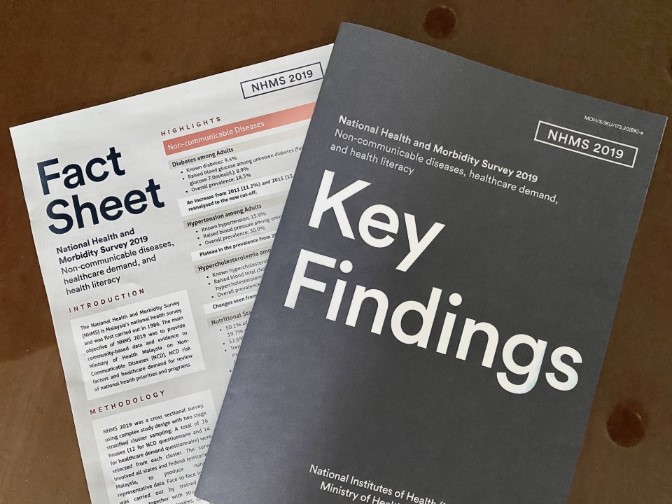Congratulations to the Institute for Public Health (IKU), Institute for Health Systems Research (IHSR) and Institute for Health Behaviour Research (IPTK) MOH for the launch of the National Health and Morbidity Survey (NHMS) 2019 results on Non-Communicable Diseases (NCDs), healthcare demand, and health literacy on 29 May 2020. The Factsheet and Key Findings documents can be found here (please scroll to the bottom).
Unfortunately, the prevalence of diabetes and obesity continues to increase in Malaysia.
In general, 35.1% of adults have low health literacy. 28% have low health literacy in managing medical issues, 32.3% have low health literacy related with disease prevention activities, while 27% have low health literacy in health promotion and healthy lifestyle practices.
Health literacy is different from awareness and knowledge. If you look at the definition of health literacy — it is the degree to which individuals have the capacity to obtain, process, and understand basic health information and services needed to make appropriate health decisions. It is beyond doing media campaigns, health talks, health camps, community/mobile health screenings, websites, infographics, leaflets, posters….
Covid-19 has shown that Malaysians don’t change behaviours through raising awareness and knowledge — despite the numerous health messaging, advisories by the government and the Senior Minister (Security Cluster) and constant pleading by the Director General of Health Malaysia in his daily press briefings.
We needed to create policies (i.e. SOPs) and strictly enforce those SOPs to achieve behavioural change. When I say “we” — I don’t mean MOH (Ministry of Health). “We” meant the National Security Council. “We” also meant all of the other ministries and government agencies outside of MOH.
MOH handles the investigations, screening (not all), contact tracing, clinics, hospitals, ICU beds — the treatment and control components. The actual Covid-19 prevention work was done by the general public, NADMA (National Disaster Management Agency), police, immigration (border control), local authorities, employers — just to name a few. Yes, MOH provided the technical knowledge and input – but implementation was outside of MOH.
We are faced with an NCD epidemic in Malaysia — unfortunately, there’s no sense of urgency (unlike Covid-19).
This can be explained by altered or biased risk perception. Risk perception is a subjective judgement that people make about the characteristics and severity of a risk, in this case, the risk of getting NCDs (e.g. diabetes, heart attacks, stroke). Risk perception is important because how Malaysians think and feel about the risks they face, is an important determinant of protective behavior.
Similar to Covid-19, it is the most vulnerable populations who are at risk of NCDs. Older adults, individuals of the lower socio-economic strata — they are the most at risk of NCDs — yet, these people are the least likely to change their behaviours due to lower health literacy related to their poorer socio-economic determinants of health (lower income, lower education level, poorer living conditions etc).
Even if these individuals wanted to change their behaviour (for the better), their economic condition and poor living environment make it so hard for them to modify their behaviours.
I just wanted to say, it is not simply about poor knowledge. If awareness and knowledge are the key to behavioural change, then no doctor will smoke or vape. But let’s just say, if you as a doctor smoke, we won’t renew your APC (annual practicing certificate) — perhaps we will get a different outcome in behaviour.
Dr Feisul Mustapha is the deputy director of the NCD unit in the Disease Control division in the Ministry of Health.
- This is the personal opinion of the writer or publication and does not necessarily represent the views of CodeBlue.




